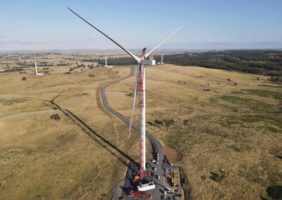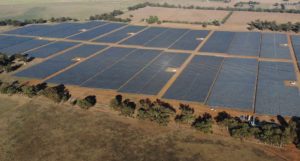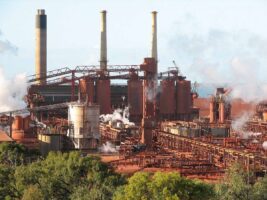There is nowhere left for big polluters to hide, as another study shows off satellites’ ability to pinpoint in real-time how much emissions are being released by the world’s dirtiest facilities.
In this instance, researchers proved that NASA’s two Orbiting Carbon Observatory (OCO) 2 and 3 missions can identify how much carbon dioxide Poland’s ‘super emitter’ Bełchatόw Power Station releases at any one moment.
Between 2017 and 2022 researchers, led by Dr Ray Nassar, an atmospheric scientist at Environment and Climate Change Canada, in Toronto matched readings from space with emissions estimates based on the plant’s known daily power output.
“Here we show for the first time that it’s already possible to measure changes in CO2 emissions from a large power plant, with observations from existing CO2-tracking satellites,” Nassar said.
“The capacity to get the most precise information about CO2 emissions from ‘super-emitters’, such as the Bełchatów power plant, across the globe will boost transparency in carbon accounting and hopefully, it will ultimately help to reduce these emissions.
“This future capacity will lead to improved CO2 emission information at the scale of countries, cities or individual facilities, enhancing transparency under the Paris Agreement and supporting efforts to reduce emissions causing climate change.”
Watching Europe’s emissions from space
The Bełchatów brown coal power plant is the largest thermal power station in Europe and the fifth largest in the world. The plant uses 300 metre high towers to remove carbon dioxide up to 550 metres above the Earth.
The two satellites have two views of the plant — OCO-2 from 705km above the surface of the Earth every 16 days, and OCO-3 from 420km more regularly — but to be useful as trackers they needed to be able to instantly detect variations created by units being shut down for maintenance or new ones pressed into service.
But there are drawbacks: the satellites can only measure the extra emissions when there are no clouds and when the plume of gases aren’t pushed over water bodies or mountains.
That said, OCO-2 was able to detect a significant dip in emissions from Bełchatów between June and September 2021 caused by maintenance shutdowns.
The data will support the Copernicus Anthropogenic Carbon Dioxide Monitoring mission, or CO2M, a pair of satellites with spatial coverage about a hundred times greater than the two NASA orbiters.
Australia needs transparent space-based reporting
This type of technology is critical for countries that have signed up to the Paris Agreement, as they are required to track emissions created by individual “super emitters” such as power plants, megacities, mines, refineries, and giant factories.
It is also becoming more common.
Last year, scientists from energy and environmental geoanalytics company Kayrros were able to pinpoint month-by-month changes in methane output from coal mines in the Bowen Basin, Queensland.
Using data from the Copernicus Sentinel-5P satellite, Kayrros showed methane emissions from the Bowen Basin in 2019-20 averaged 1.6 million tonnes — equivalent to 30 million passenger vehicles.
But with federal government data for the same period showing only a third of that volume being reported, Australia is in need of this kind of transparent, independent information if it is to meet its Paris obligations, says Tim Buckley, director of Climate Energy Finance.
“The idea of having real time data by facility, that is independent and transparent, would be a huge step up. At the moment what we’ve got is the Clean Energy Regulatory reporting on an ad hoc and not full basis so there is a massive need for improved transparency,” he told RenewEconomy.
Furthermore, while the European study covered carbon dioxide, given methane is some 85 times more powerful as a greenhouse gas, being able to track those emissions from Australia’s sizeable fossil fuel industry is critical.
“Methane is the litmus test,” Buckley said. “When you’re deliberately consistently underestimating your expected externalities and the government relies on that, you have complete regulatory capture.”










